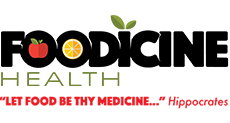Ulcerative Colitis
What is Ulcerative Colitis?
Ulcerative colitis, an autoimmune disease, occurs when the lining of the large intestine (colon) becomes inflamed, results in redness and congestion with production of mucus and pus, and may go on to formation of sores or ulcers that bleed. This can also result in abdominal or rectal discomfort and diarrhea. This is unlike Crohn’s disease, where the entire width of the intestinal wall is affected and both the large and small bowel as well as other parts of the intestinal tract may be involved. Ulcerative colitis is also associated with other extraintestinal problems such as joint pain, eye inflammation, skin inflammation, and liver inflammation.
The Diets
The dietary treatment for ulcerative colitis varies from patient to patient. When in remission, a general healthy diet, including foods high in fiber, is generally recommended. A high meat intake may be associated with a higher relapse rate, but the data is scant. During a flare, a low fiber, lactose-free and low-fat diet may be recommended, depending on the individual case. If there is a narrowing in the bowel, then a low undigestable fiber diet may help prevent blockages (obstructions) of the bowel. Some patients may need to stay on a low fiber, lactose-free and low-fat diet even in remission. Two diets have been increasingly recommended for ulcerative colitis patients who find that certain foods increase their symptoms:
-The Low FODMAP Diet, for patients who have increased gas from the difficulty of digesting complex carbohydrates. This diet avoids foods that are high in FODMAPs (fermentable oligosaccharide, disaccharide, monosaccharide and polyols), such as some fruits, vegetables, nuts, seeds, grains and grain-based products, dairy and dairy alternatives, sugars and sweeteners. The low digestibility of FODMAPs results in their poor absorption in the small intestine. In this case, when eaten, the food passes undigested from the small intestine to the large intestine, where it is fermented by bacteria. This can lead to IBS-like symptoms including gas, bloating, abdominal discomfort, pain and altered bowel function. The low FODMAP diet includes foods such as some fruits (for examplebananas, blueberries, and pineapple), vegetables (for example-tomatoes, green beans, and potatoes), some nuts, seeds, grains and grain-based products, some dairy and dairy alternatives, and sugars and sweeteners that are low in fermentable oligosaccharide, disaccharide, monosaccharide and polyols.
-The Specific Carbohydrate Diet (SCD), which restricts complex carbohydrates, such as sugars, in the diet. Complex carbohydrates are not easily digested and when eaten, the food passes undigested from the small intestine to the large intestine, where it is fermented by bacteria. This can lead to IBS-like symptoms including gas, bloating, abdominal discomfort, pain and altered bowel function. The carbohydrates that are allowed in the SCD are monosaccharides that can be easily absorbed by the intestinal wall, such as apples, apricots, bananas, peppers and broccoli. This diet has been successful for many ulcerative colitis patients, but has not been confirmed in the medical literature.
resources
For Additional Resources on Ulcerative Colitis and recommended diets visit:
- Crohn’s and Colitis Foundation of America
- Beth Israel Deaconess Medical Center
- Low FODMAP Diet (http://www.med.monash.edu/cecs/gastro/fodmap/)
- Low FODMAP Diet (http://shepherdworks.com.au/disease-information/low-fodmap-diet)
- Low FODMAP Diet Stanford University University Medical Center
- Low FODMAP Diet (http://www.katescarlata.com/)
- Specific Carbohydrate Diet
- Academy of Nutrition and Dietetics


